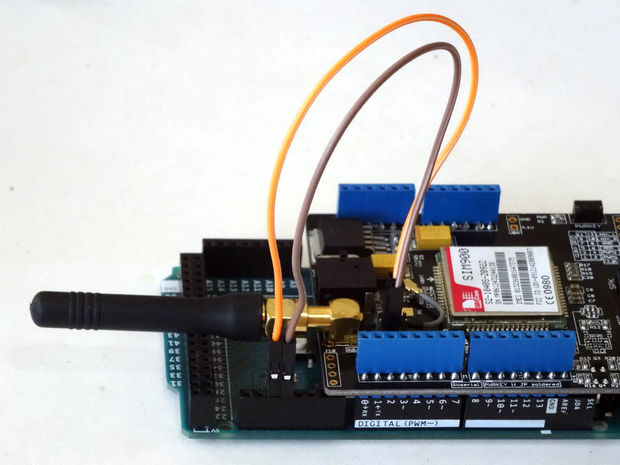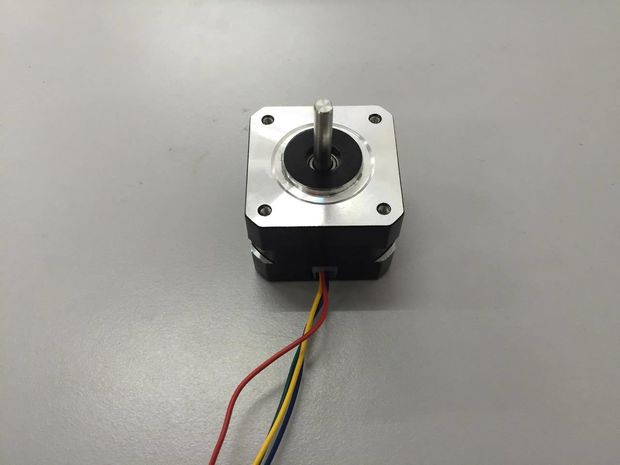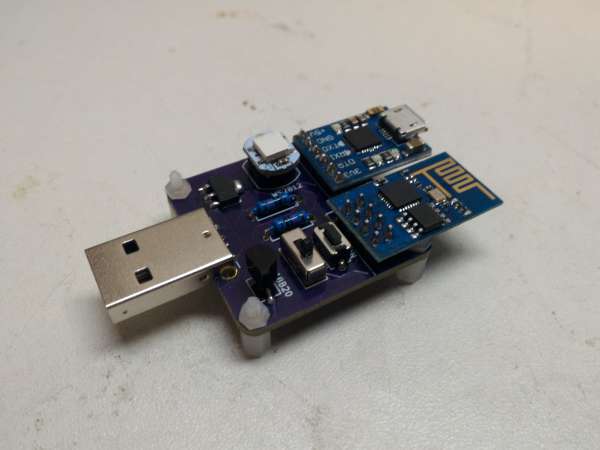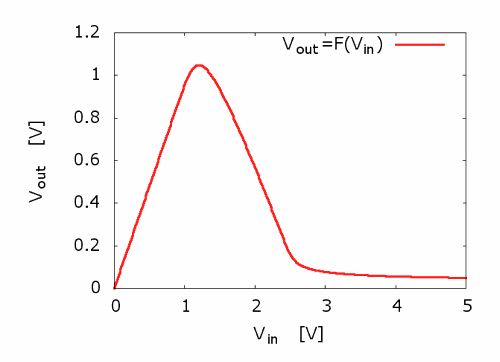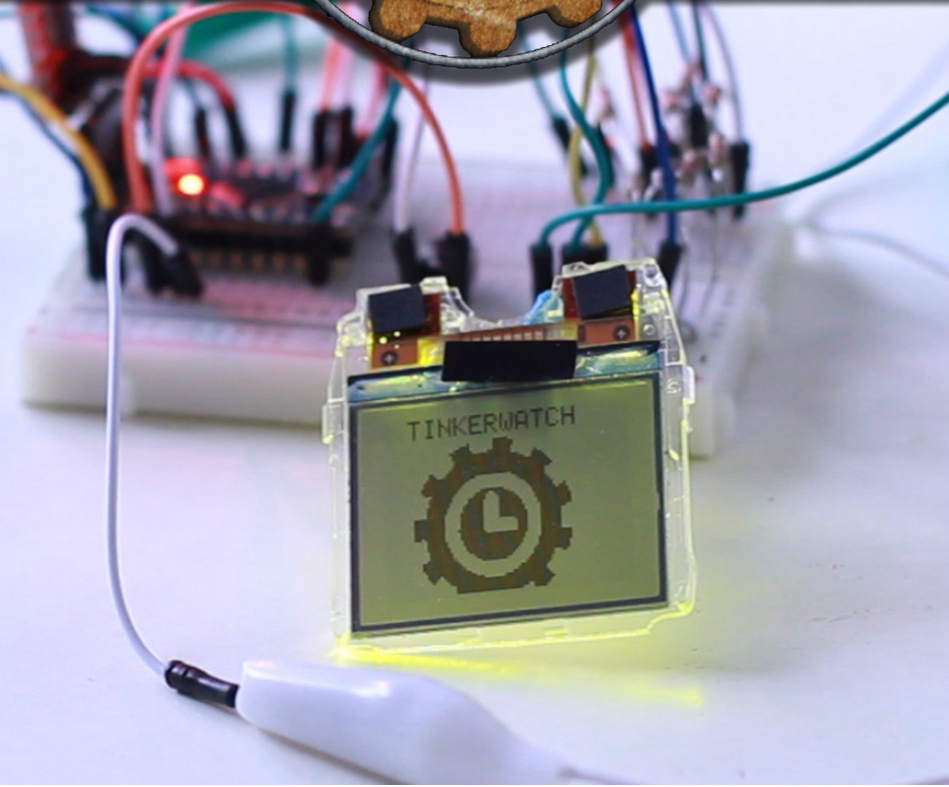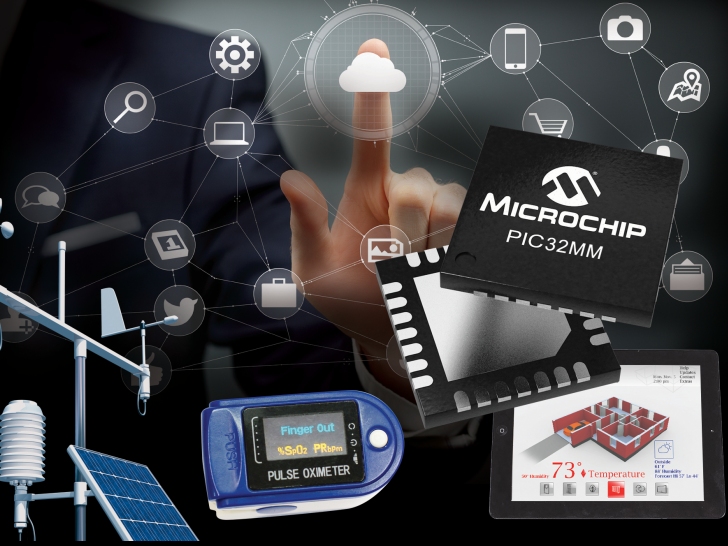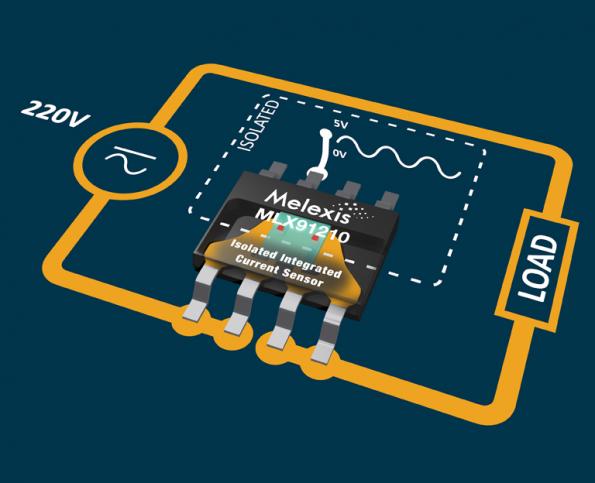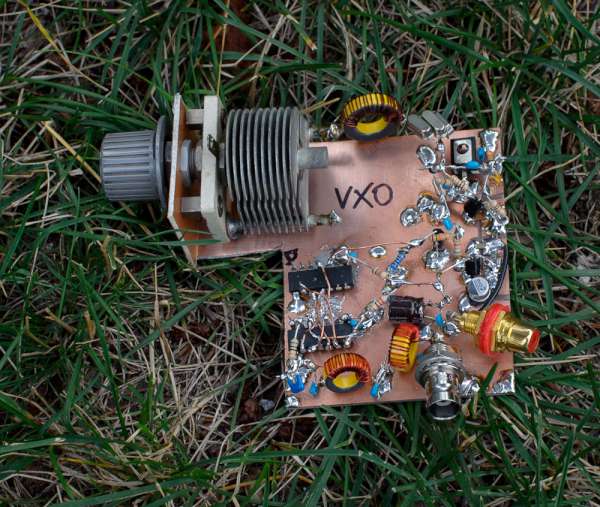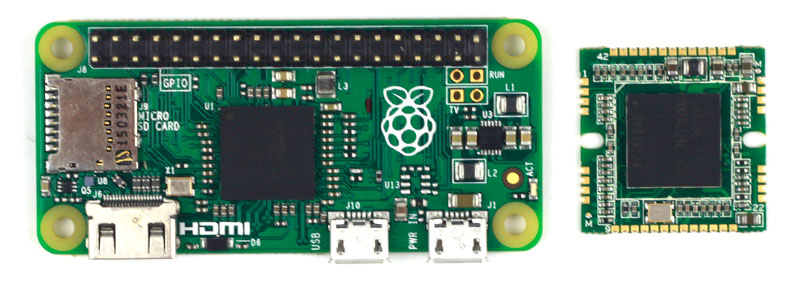
ArduCAM has introduced a tiny Raspberry Pi compatible module based on Broadcom’s BCM2835 Processor, the same chip found in the original Raspberry Pis A, B, B+ and Zero. This module is tiny, measuring only 24 x 24mm and it is compatible with all of the software that makes the Raspberry Pi so popular. It comes with 256MB/512MB LPDDR2 Memory, Camera CSI Interface x2, USB, AV output, SPI, UART, I2C, GPIO and weights only 2g. The board isn’t finalized and it isn’t for sale yet.
ArduCAM team now is developing a coin size Raspberry Pi compatible compute module. The total size of the SOM is 24mm x 24mm, compared to the offical Raspberry Pi compute module and new Pi ZERO, it will be the smallest Raspberry Pi compatible module in the world. The coin size pi compute module is fully customizable and can offer the extra features that wasn’t provided by the standard Raspberry Pi boards. User can run the system on a small 36mm x 36mm adapter mother board with camera support. It is ideal for battery powered portable device like smart watch, action camera etc. The highlight feature of this coin size pi module, it supports dual camera interface and stereo vision which can be used in robots for machine vision applications or high definition drone camera.
ArduCAM Introduces tiny Raspberry Pi compatible board – [Link]



